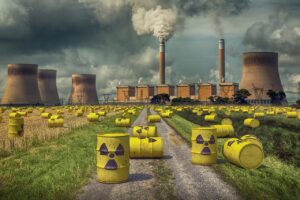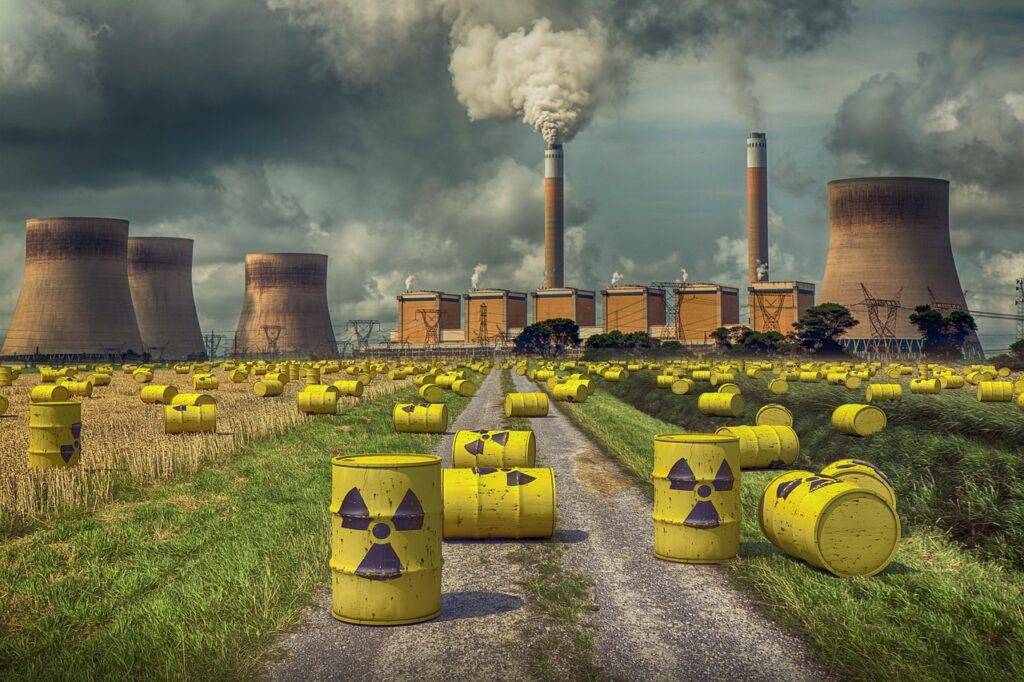
A nuclear hazard is a radioactive or toxic or any hazardous property of radioactive material which can cause potential threats to life. It causes so many years to heal or repair the things that have been damaged due to nuclear hazards, sometimes it cannot be repaired. Nuclear or radioactive pollution occurs mainly due to the mishandling or inappropriate storage of radioactive substances. The problem with radioactive pollution is that you can’t see and smell the pollutants and neither can you touch them. So it’s very difficult to understand whether there has been a leakage or pollution by radioactive substances until you start seeing the symptoms or you start seeing the effects of it. Therefore it is important to understand the human health impacts of nuclear hazards and their remedial methods.
What is the source of nuclear hazards?
Radioactive substances are omnipresent and the sources could be natural as well as anthropogenic such as nuclear power plants, nuclear weapons, mining, and research. However, anthropogenic activities release radioactive substances in large quantities and volumes than natural causes.
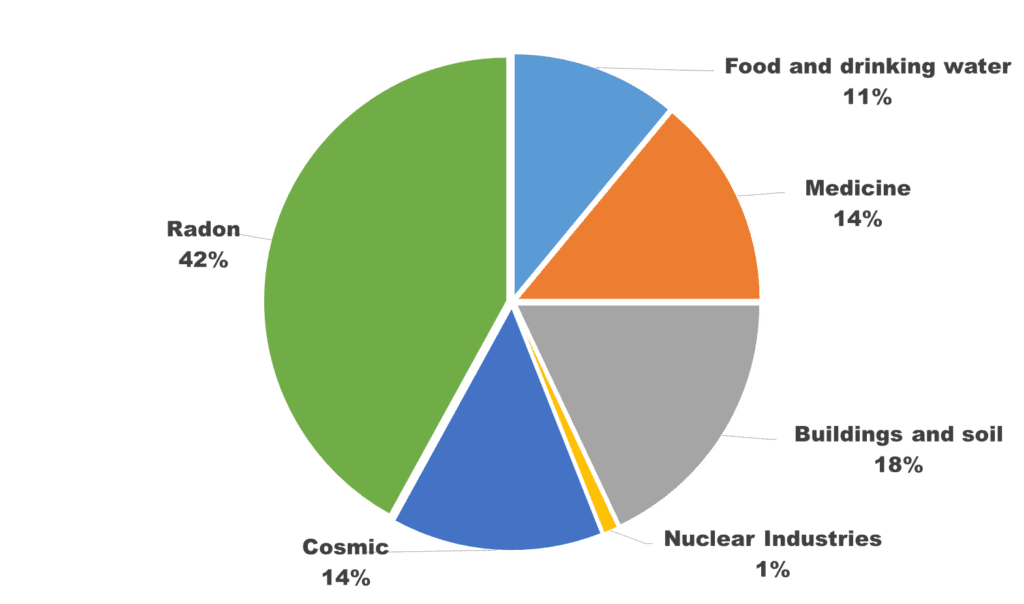
1. Natural Sources
The main natural sources of radioactive radiation are the leakage of radioactive material or Earth’s crust or small amounts of radioactive substances along with cosmic rays coming from outer space. Earth’s crust radiates outwards radiations which can add to the radioactive load in the environment.
2. Anthropogenic Sources
Nuclear power plant often requires a large amount of radioactive substance and further processing to produce energy. The entire world is using nuclear power plants for the generation of electricity. At present, approx. 10% of electrical energy comes from nuclear power plants. For the same, a large number of radioactive materials are transported and stored. These materials are extremely risky to handle since they can cause maximum severity-disasters. Two major nuclear disasters have been reported so far, namely Chornobyl, Ukraine (1986) and Fukushima, Japan (2011) disaster. These kinds of disasters release large amounts of radioactive radiation and exist for longer even up to 100 years.
Nuclear weapons are another source of radioactive pollution. Everyone knows about the bombing of Hiroshima and Nagasaki in 1945 which caused irreversible serious brain damage and even now people are suffering. In this incident, more than a lakh people died and suffered because of this nuclear hazard. Not only during the use of weapons but also during the testing of nuclear weapons it may release into the environment if proper measures are not taken.
In addition, there is a radioactive pollution risk from the mining of radioactive materials such as uranium. If precautionary measures aren’t taken during excavation, transportation, and storage then it can lead to exposure.
Lastly, it may contribute form the disposal of nuclear waste originating from various activities. Mostly it is managed by burying it under the land or the sea. If precautions are not taken then it can pose a serious health risk.
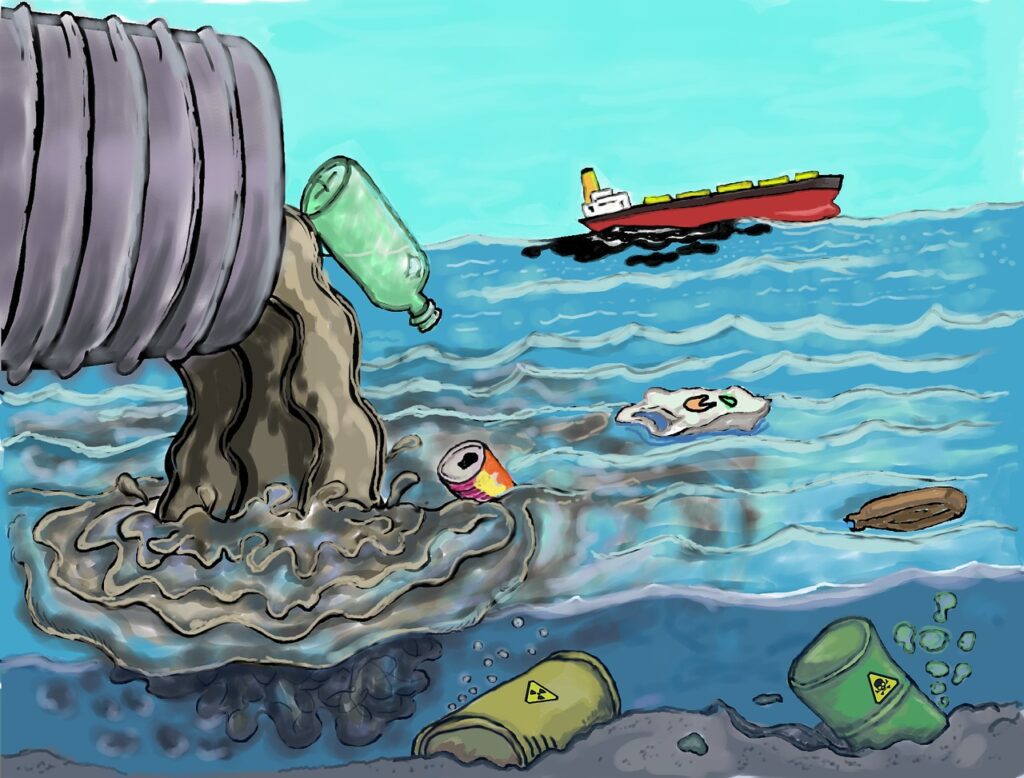
What is radioactive radiations?
During the radioactive decay process, it releases a lot of radiation like Alpha, Beta, and gamma which can pose a health risk to human beings. These ionization radiations have a variable penetration power and energy. It can cause severe damage to human health and animals including aquatic life. Human beings are most prone to get the adverse health effect of nuclear hazards as our skin is the easier way for the radiation to penetrate deep inside the body and are hard to penetrate the concrete.
Alpha-particles cannot penetrate the skin to reach internal organs due to low penetration power but it has more energy than beta-particles. Therefore, alpha particles are more dangerous when it enters the body by inhalation or through food. So, it can not damage internal organs but beta particles can damage internal parts of the body.
Activities that may increase nuclear hazards and human health impacts
- Mining of radioactive substances such as uranium
- Use of radiation in medicine and research
- Storage of radioactive waste
- Handling, transportation, and processing of radioactive material
- Use of nuclear weapons
- Use of nuclear power plants
Impacts of increasing nuclear hazards on human
According to US EPA, the major risk to human beings is irreversible and unpredictable mutation due to DNA damage thereby affecting genes and chromosomes. These damages are permanent and they are hereditary and can pass to the next generation. However, the human health impacts of nuclear hazards widely differ according to the exposure durations.
- Chronic exposure (long period) to radioactive radiation affects the various organ systems such as loss of reproductive ability, miscarriages, birth defects, triggering cancer, weakening of the immune system, genetic mutations, cataracts, and premature aging are the most common effects. In many cases, high doses of radiation are fatal.
- Acute exposure (short-term) or mild radiation sickness includes nausea, vomiting, headache, fatigue, and weakness within 24 to 48 hours.
- However, moderate radiation sickness includes vomiting blood, bloody stool, poor wound healing, hair loss, and fatal to sensitive individuals.
What are the routes of exposure to nuclear hazards?
Human exposure to radioactive materials is external as well as internal. The internal dose could be due to the inhalation of radioactive materials from the air, and the consumption of food and water. The external exposure could be due to the continuous emission of radioactive radiation from radioactive materials present in the environmental compartments including clouds, soil, air, and water.
Radioisotopes enter the environment during the mining of uranium. In addition, the radioactivity in the earth’s crust enters the crops grown there and ultimately reaches human beings. Radionuclides enter the water bodies or the groundwater by coming in contact with the contaminated soil or rock. Radioactive iodine accumulates in the thyroid gland and causes cancer. Similarly, strontium-90 accumulates in the bones and causes leukemia or cancer of the bone marrow. It also weakens the immune system, causes mental retardation, and development of cataracts.
Remedial methods to control nuclear pollution
- Preventing leakages from nuclear reactors, careless handling, transport, and use of radioactive fuels, fission products, and radioactive isotopes.
- According to BIS, drinking water should not contain more than 0.1 and 1.0 Bq/l of Alpha and Beta emitters, respectively.
- Waste disposal must be careful, efficient, and effective.
- Minimize use of nuclear elements.
- Proper maintenance of nuclear power plants.
- Baning the use of nuclear weapons.
- Extraction of radioactive elements from nuclear waste.
- Preventive nuclear experiments.
- Enforcement of the deep underground disposal (hundreds of meters deep in the earth’s crust) process for all types of radioactive hazards.
- Careful handling during the transport, storage, and disposal
- Regular quantitative monitoring by frequently sampling all the risk areas.
- Enforcement of safety measures and immediate action against occupational exposure.
- Prompt action to mitigate the nuclear hazard to minimize its adverse consequences for human life, health, property, or the environment are crucial under radiation emergencies.
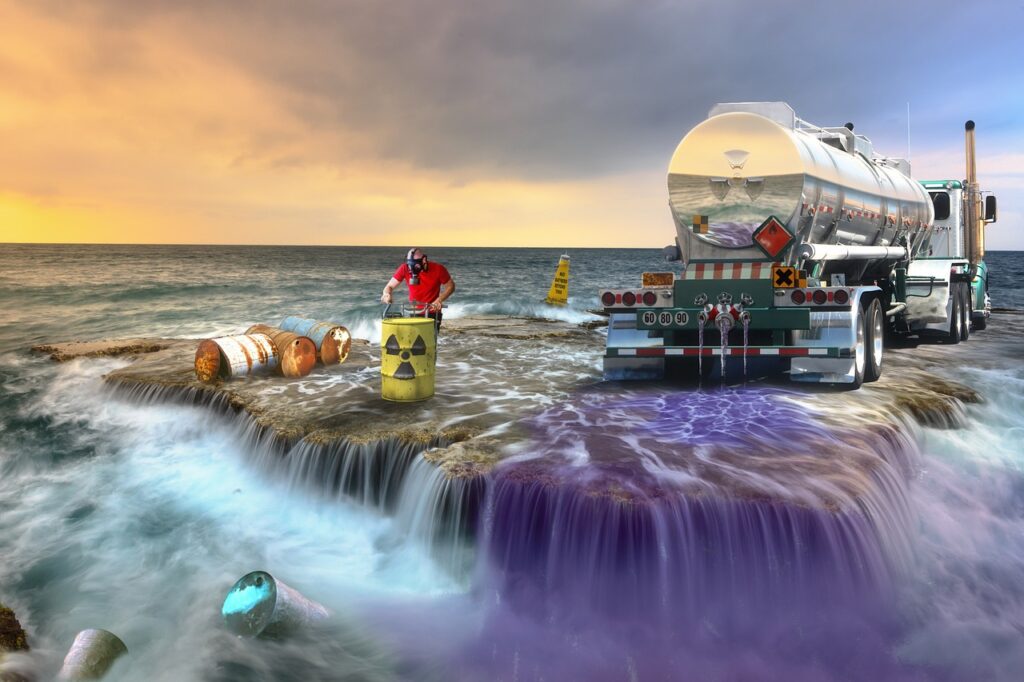
Conclusion
Nuclear hazards are omnipresent in all environmental compartments either due to natural or anthropogenic. These hazards are manageable by our body if it is under the limit. However, due to extensive anthropogenic activities, the environment may contain high doses of nuclear hazards. Hence all need to understand the impacts of nuclear hazards on human health and its control measures. To minimize the adverse human health impact of nuclear hazards under a radiation emergency, a proper mitigation and awareness plan should be ready well in advance.
